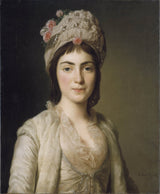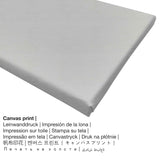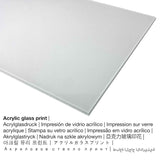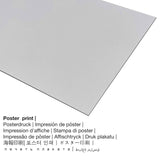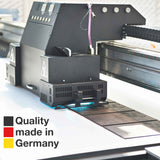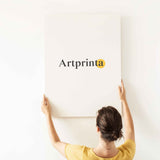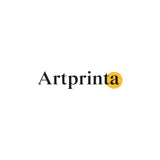Alexander Roslin, 1777 - Zoie Ghika, Moldavian Princess - ọmarịcha nka
Ụtụ gụnyere. Mbupu gbakọrọ na ndenye ọpụpụ.
(© - National museum Stockholm - National Museum nke Stockholm)
English: The Moldavian princess Zoie Ghika is depicted in a manner that differs from the bulk of Roslin’s portraits. The princess is shown without a wig. She is wearing Moldavian costume – a turban-like bonnet decorated with roses, a white silk dress with silver ribbons and lace edges and a sleeveless fur jacket. Her costume is elegant without suggesting excessive wealth. Russia had invaded Moldavia and Zoie Ghika’s father, a tributary prince of the Ottoman Sultan, was executed. His family became political pawns and were taken to the court of Catherine the Great, who also commissioned this portrait. The Moldavian princesses were an exotic addition to the Russian court. They were also a symbol of the geographic expansion of the Russian empire towards the Black Sea. Alexander Roslin visited Russia in 1775 to take up commissions from the Russian court. He stayed there for about two years and received 75 commissions. Many of the commissions had to be finished after he returned to Paris. The portrait of Zoie Ghika was one of the last that Roslin painted before returning to Paris. It is often cited to prove that the quality of his work did not deteriorate even when he working on numerous commissions at the same time. Den moldaviska prinsessan Zoie Ghika är gestaltad på ett sätt som skiljer sig från de flesta av Roslins övriga porträtt. Prinsessan bär inte peruk utan har håret uppsatt. Hon har moldavisk dräkt – en turbanliknande huvudbonad dekorerad med rosor, vit sidenklänning med silverband och spetskanter och en väst i päls. Dräkten är elegant, men talar ändå inte om överflöd. Ryssland hade intagit Moldavien och Zoie Ghikas far, som var lydfurste blev avrättad. Familjen blev en bricka i det politiska spelet och flyttades till Katarina den Storas hov. Kejsarinnan var också den som beställde porträttet. De moldaviska prinsessorna blev ett exotiskt inslag vid det ryska hovet. De blev samtidigt en symbol för det ryska imperiets geografiska utsträckning, långt ner mot Svarta havet. 1775 kom Alexander Roslin till Ryssland för att ta upp porträttbeställningar av det ryska hovet. Konstnären stannade i ungefär två år och fick 75 beställningar. Många av de beställda porträtten fick slutföras efter återkomsten till Paris. Porträttet av Zoie Ghika var ett av de sista Roslin målade innan han återvände till Paris. Det brukar lyftas fram som ett bevis för att kvalitén på hans målningar inte blev sämre även om han var överhopad av arbete och beställningar. Än idag är det svårt att inte leva sig in i porträttet av den moldaviska prinsessan. Vad ser du i hennes blick och hållning? En kuvad prinsessa eller en stolt flykting?
Things you should know about this artpiece painted by the old master with the name Alexander Roslin
This artpiece "Zoie Ghika, Moldavian Princess" was created by the nwoke Swedish artist Alexander Roslin in 1777. The 240 year old painting was made with the following size of Height: 64,7 cm (25,4 ″); Width: 53 cm (20,8 ″) Framed: Height: 85 cm (33,4 ″); Width: 73 cm (28,7 ″); Depth: 8 cm (3,1 ″) and was produced on the medium mmanụ na kwaaji. Agụnyere ihe osise a na National Museum nke Stockholm digital art collection, which is Sweden's museum of art and design, a Swedish government authority with a mandatet o preserve cultural heritage and promote art, interest in art and knowledge of art. This artpiece, which is part of the public domain is included with courtesy of Nationalmuseum Stockholm na Wikimedia Commons.: . Nhazi nke mmepụta dijitalụ bụ Eserese na akụkụ ruru nke 1: 1.2, nke pụtara na ogologo bụ 20% mkpụmkpụ karịa obosara. The painter Alexander Roslin was an artist from Sweden, whose style was primarily Rococo. The Rococo artist was born in the year 1718 in Malmo, Skane, Sweden and passed away at the age of 75 na 1793.
Họrọ ihe ị họọrọ
Maka ngwaahịa ọ bụla anyị na-enye ụdị nha na ihe dị iche iche. Ị nwere ike ịhọrọ nha na ihe kachasị amasị gị n'ime nhọrọ ndị a:
- Bipụta na iko acrylic (nke nwere ezigbo mkpuchi iko n'elu): A glossy print on acrylic glass, which is sometimes referenced as a print on plexiglass, will turn the original into marvellous wall decoration and is a viable alternative to aluminium and canvas prints. The artwork is manufactured with modern UV direct print technology. It makes impressive and rich colors. With a glossy acrylic glass fine art print contrasts and granular color details will be identifiable thanks to the precise gradation in the picture.
- Metal (aluminium debond mbipụta): Aluminium Dibond prints are prints on metal with an outstanding depth effect, which makes a fashionable impression by having a non-reflective surface. The Aluminium Dibond Print is the ideal introduction to the sophisticated world of fine art prints on aluminum. The colors are vivid and luminous, the fine details appear crisp. This print on Aluminum Dibond is the most popular entry-level product and is a contemporary way to display artworks, as it draws focus on the whole artwork.
- Akwụkwọ mmado ebipụtara (akwa akwa akwa): Our poster print is a printed canvas paper with a slightly rough surface finish, which resembles the actual version of the masterpiece. It is perfectly qualified for framing the art replica using a customized frame. Please keep in mind, that depending on the size of the poster we add a white margin of approximately 2 - 6cm around the print, which facilitates the framing.
- Kwaaji: A printed canvas material applied on a wood stretcher frame. A printed canvas of this artwork will let you turn your into a large artpiece as you would see in a gallery. The great advantage of canvas prints is that they are relatively low in weight. That means, it is easy and straightforward to hang your Canvas print without the support of any wall-mounts. A canvas print is suitable for all types of walls.
Banyere omenka
| Ihe nkiri: | Alexander Roslin |
| Aliases: | M. Roslin, Alexander Roslin, Rosselyn, Roslin Alexander, Roslin Svezzese, A. Roslin, Roslin Alexandre, Rosselin, Rosseline, Alexander Rosselyn, רוזלין אלכסנדר, Roslin |
| Gender: | nwoke |
| Nationality: | Swedish |
| Ọrụ onye na-ese ihe: | onye na-ese ihe |
| Obodo onye nka: | Sweden |
| Otu nka: | nna ukwu ochie |
| styles: | Rococo |
| Oge ndu: | 75 afọ |
| Afọ ọmụmụ: | 1718 |
| Ebe amụrụ onye: | Malmo, Skane, Sweden |
| Nwụrụ n'afọ: | 1793 |
| Ebe ọnwụ: | Paris, Ile-de-France, France |
Nkọwa ahaziri nke ihe nka
| Aha ọrụ nka: | "Zoie Ghika, Moldavian Princess" |
| Nhazi nka nka: | sere |
| Nhazi nka: | nka ochie |
| Century: | 18th narị afọ |
| Emepụtara na: | 1777 |
| Afọ nka: | ihe karịrị afọ 240 |
| Usoro izizi: | mmanụ na kwaaji |
| Nha izizi nka: | Ogologo: 64,7 cm (25,4 ″); Obosara: 53 cm (20,8 ″) Ekebere: Elu: 85 cm (33,4 ″); Obosara: 73 cm (28,7 ″); Omimi: 8 cm (3,1 ″) |
| Ụlọ ihe ngosi nka: | National Museum nke Stockholm |
| Ebe ebe ngosi nka: | Stockholm, Obodo Stockholm, Sweden |
| Weebụsaịtị nke ihe ngosi nka: | National Museum nke Stockholm |
| Ụdị ikike nka: | ngalaba ọha |
| Site n'aka: | Nationalmuseum Stockholm na Wikimedia Commons |
Nkọwa akụkọ ahaziri ahazi
| Nkewa ngwaahịa: | ezi nka mmeputakwa |
| Usoro mmeputakwa: | mmeputakwa n'ụdị dijitalụ |
| Usoro nhazi: | Mbipụta UV ozugbo (mbipụta dijitalụ) |
| Mmalite ngwaahịa: | emere na Germany |
| Ụdị ngwaahịa: | na mmepụta ihe |
| Ihe eji eme atụmatụ: | mgbidi gallery, ihe ndozi ụlọ |
| Ndepụta: | usoro eserese |
| Ụdị anya: | 1: 1.2 (ogologo: obosara) |
| Nkọwa nke oke akụkụ: | ogologo bụ 20% mkpụmkpụ karịa obosara |
| Ụdị akwa: | ígwè obibi akwụkwọ (aluminium dibond), ebipụta canvas, mbipụta akwụkwọ mmado (akwụkwọ kwaaji), mbipụta iko acrylic (nwere ezigbo mkpuchi iko) |
| Nhọrọ nke akwa akwa n'elu etiti ihe ndọtị (mbipụta akwa akwa): | 50x60cm - 20x24", 100x120cm - 39x47", 150x180cm - 59x71" |
| Mpempe iko acrylic (nwere ezigbo mkpuchi iko) nha dị iche iche: | 50x60cm - 20x24", 100x120cm - 39x47" |
| Nhọrọ nke mbipụta akwụkwọ mmado (akwụkwọ kwaaji): | 50x60cm - 20x24", 100x120cm - 39x47" |
| Aluminium dibond ebipụta (ihe aluminium) dị iche iche: | 50x60cm - 20x24", 100x120cm - 39x47" |
| Igwe onyonyo: | enweghị etiti |
Ederede iwu dị mkpa: We try whatever we can to describe our products as accurately as it is possible and to exhibit them visually on the product detail pages. However, some colors of the printing material, as well as the imprint may vary somehwat from the representation on your screen. Depending on the screen settings and the nature of the surface, colors may not be printed 100% realistically. Considering that our fine art prints are processed and printed by hand, there might as well be slight variations in the exact position and the size of the motif.
© Nwebiisinka nke - Artprinta (www.artprinta.com)

